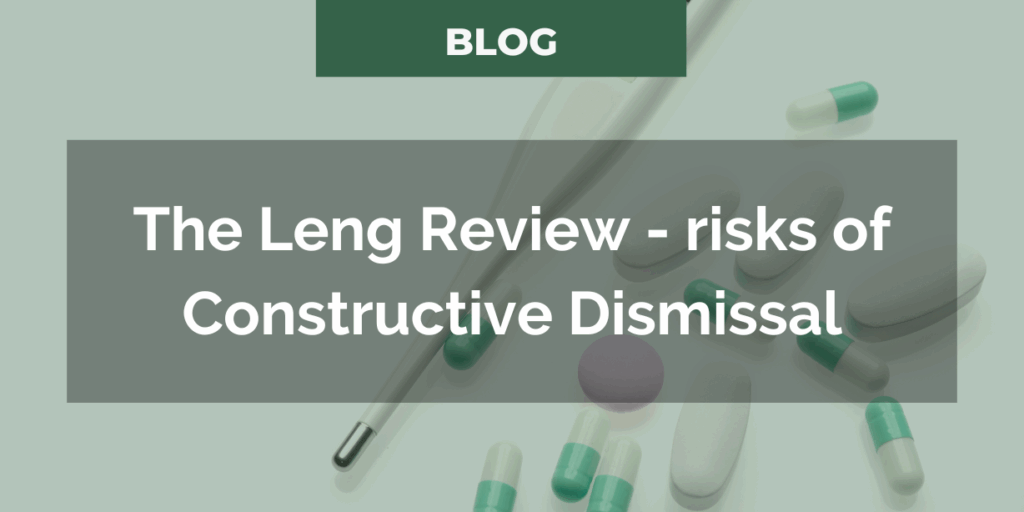Coronavirus Help | General Guidance • September 17, 2020
Coronavirus – Isolation and testing in the Workplace
Written by Martha Mitchell
In the rapidly changing circumstances the Coronavirus Pandemic has created much uncertainty and as the R number goes above 1 again, we have been receiving questions such as:
“My employee was tested positive, they have been rested and it has come back negative can they come back to work?”
“My employee’s partner has tested positive how long do they have to isolate for?”
“My employee has tested positive, what do they have to do?”
By following this simple guide we can help to resolve your HR Headache.
Isolation
Where an employee is suffering from Covid-19 symptoms they should isolate at home. The isolation period has been increased to 10 days for anyone who is suffering from symptoms or tests positive. The 10 days starts on the day tested positive or the day you develop symptoms depending on which is earliest.
The employee should call NHS 111 and/or request a test.
Isolation is different to –
- Quarantine – upon returning from a prescribed country
- Social Distancing
- Shielding
Isolation is remaining at home in order to avoid contact with others and to reduce the risk of spreading Coronavirus.
Tests
A test should only be requested if you are symptomatic. The symptoms are
- High temperature
- a new, continuous cough
- a loss or change to your sense of smell of taste.
Testing ability is of course limited and unless told otherwise you should not seek to be re-tested.
Households
Where your employee lives with someone who is either symptomatic or has tested positive for Coronavirus your employee must isolate for 14 days starting from the day that the household member either became ill or tested positive.
They should only seek to be tested if they are symptomatic or have been directed to get a test by a medical professional. Should the employee become ill during this period they must restart their isolation period for ten days.
Support Bubble
Where your employee is part of a support bubble with someone who is either symptomatic or has tested positive for Coronavirus your employee must isolate for 14 days. They should only seek to be tested if they are symptomatic or have been directed to get a test by a medical professional.
Track and Trace
The Government’s Track and Trace Service aims to contact anyone who has been in close contact with a person who has been tested as positive for coronavirus.
Where an employee has been contacted by Track and Trace they must immediately isolate for 14 days. They should seek to be tested only if directed my a medical professional.
Proof and Pay
At the start of the pandemic employers were asked by the Government to demonstrate a reasonable approach to proof. The additional strain on the NHS meant Fit Notes to prove sickness were deemed unreasonable. This is still the case.
Any employee can request an Isolation Note via a simple online form. This is subject to abuse but it falls down to employers to act reasonably, any suspicion of abuse of this system can of course be investigated.
Paying the employee
Employers must pay employees Statutory Sick Pay for any period of isolation. You can find out more about that here Failure to comply with self isolation, the employer and employee could be fined up to £10,000.
Should you need any assistance dealing with the headaches caused by testing, track and trace and isolation contact us here

You might also like…
Health & Safety Bingo! Compliance Made Simple (and Not Boring!)
Health & Safety Bingo is here to prove that compliance doesn’t have to mean boring manuals, endless tick-boxes, or confusing jargon. If you’ve got five or more staff, there are a few essentials you need to cover, but it can be simple, visual, and even a little...
The Leng Review and risks to your business
Major Changes to Physician Associate Roles Following Leng Review: What NHS Practices Need to Know The recent publication of the Leng Review has included recommendations which require significant changes, specifically around the role of Physician Associates. What...
Do I need to do a fire risk assessment?
Fire risk assessments are a fundamental legal requirement in the United Kingdom that could, to be blunt, be the difference between life and death. Understanding your obligations under UK fire safety legislation is crucial for anyone responsible for premises,...






